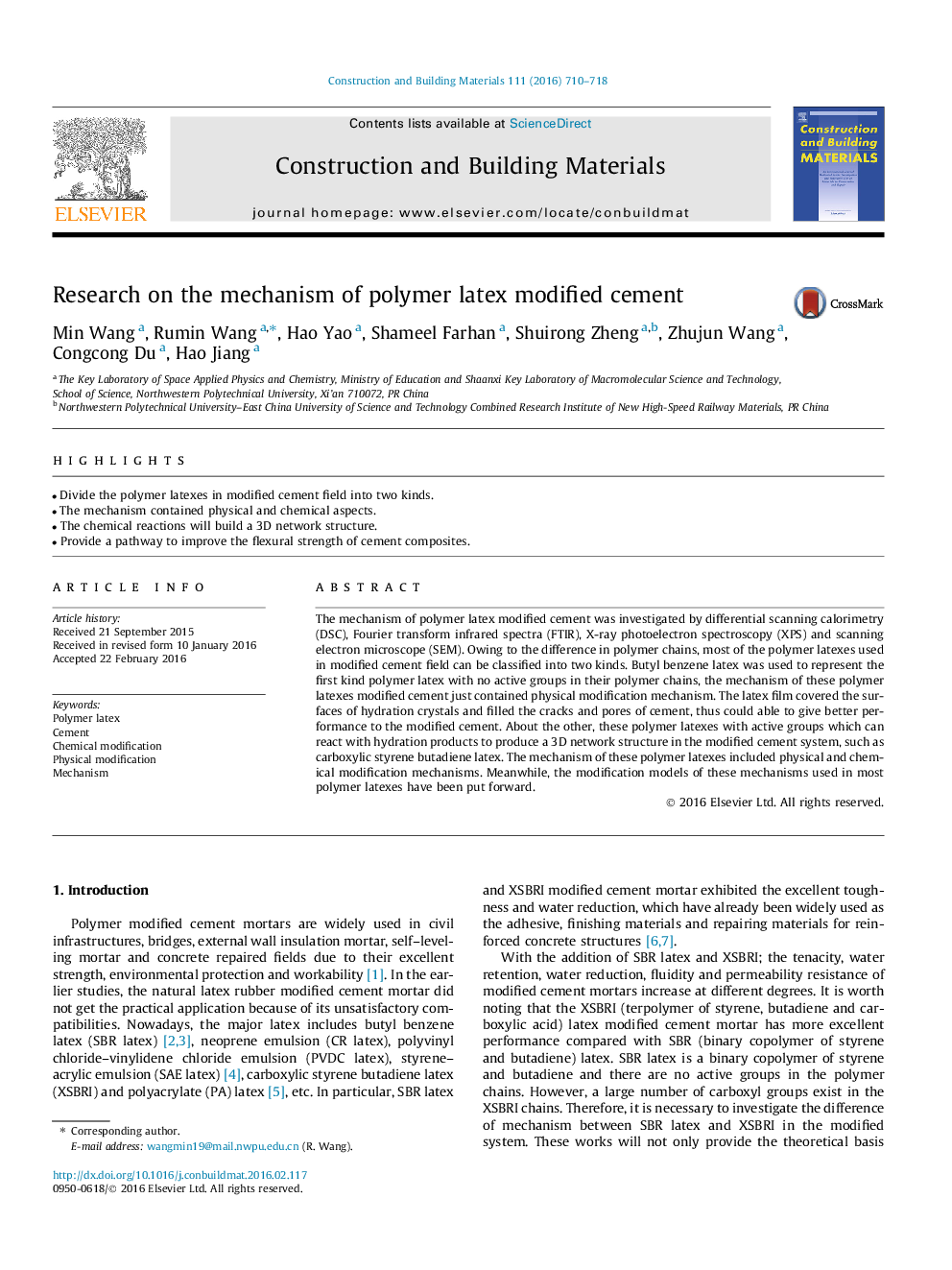| Article ID | Journal | Published Year | Pages | File Type |
|---|---|---|---|---|
| 6719443 | Construction and Building Materials | 2016 | 9 Pages |
Abstract
The mechanism of polymer latex modified cement was investigated by differential scanning calorimetry (DSC), Fourier transform infrared spectra (FTIR), X-ray photoelectron spectroscopy (XPS) and scanning electron microscope (SEM). Owing to the difference in polymer chains, most of the polymer latexes used in modified cement field can be classified into two kinds. Butyl benzene latex was used to represent the first kind polymer latex with no active groups in their polymer chains, the mechanism of these polymer latexes modified cement just contained physical modification mechanism. The latex film covered the surfaces of hydration crystals and filled the cracks and pores of cement, thus could able to give better performance to the modified cement. About the other, these polymer latexes with active groups which can react with hydration products to produce a 3D network structure in the modified cement system, such as carboxylic styrene butadiene latex. The mechanism of these polymer latexes included physical and chemical modification mechanisms. Meanwhile, the modification models of these mechanisms used in most polymer latexes have been put forward.
Related Topics
Physical Sciences and Engineering
Engineering
Civil and Structural Engineering
Authors
Min Wang, Rumin Wang, Hao Yao, Shameel Farhan, Shuirong Zheng, Zhujun Wang, Congcong Du, Hao Jiang,
